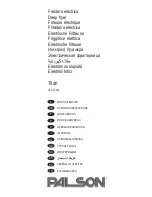
Freeze-dryer Gamma 1-16 LSCplus
Freeze-dryer Gamma 2-16 LSCplus
8 Maintenance and service
94 / 126
Version 04/2013, Rev. 2.10 of 09/03/2020
• sb-dc
Translation of the original operating manual
→
8.1.4
Heat exchanger (only for air-cooled freeze-dryers)
A lamellar heat exchanger is used for cooling the refrigerant that is
compressed by the refrigeration unit. This air-cooled heat exchanger is
located at the back of the unit (see chapter 2.1.1 - "Functional and
operating elements").
Dust and dirt impair the cooling effect of the air flow. Dust on the lamellas
prevents the exchange of heat and, thereby, impairs the performance and
power of the refrigeration unit. Strong soiling may cause the unit to fail.
This is why the selected set-up location should be as clean as possible.
• Check the heat exchanger at least once per month for soiling and clean
it if necessary.
• Please contact the Christ service department if you have any queries
(see chapter 7.3 - "Service contact").
8.1.5
Electrical system
DANGER
Danger of life caused by electric shock
There is a risk of electric shock when touching current-carrying
components.
This may lead to ventricular fibrillation, cardiac arrest, or respiratory
paralysis.
• Only qualified electricians are authorised to perform work on the
electrical system of the freeze-dryer!
The electrical equipment of the freeze-dryer must be checked at regular
intervals by a qualified electrician. Defects such as loose connections or
burnt cables must be eliminated immediately.
→
8.1.6
Vacuum pump
NOTE
Please refer to the separate operating manual of the vacuum pump!
The stress of the vacuum pump in conjunction with a freeze-dryer is usually
not very high. This is why the recommendations in this operating manual
may differ from the information that is provided by the pump manufacturers.
Under normal operating conditions, the following maintenance tasks
concerning the vacuum pump must be performed at regular intervals:
• Check the oil level of the vacuum pump once per week. If necessary,
top it up with oil.
• Check the running pump for any unusual noise.
• Ensure that the pump has reached its operating temperature prior to
changing the oil.
• Perform the first oil change after approximately 100 operating hours.
• The other oil changes depend on the operating conditions. In general,
an interval of 500 to 1,000 operating hours is sufficient.
• Please contact the Christ service department if you have any queries
(see chapter 7.3 - "Service contact").
















































